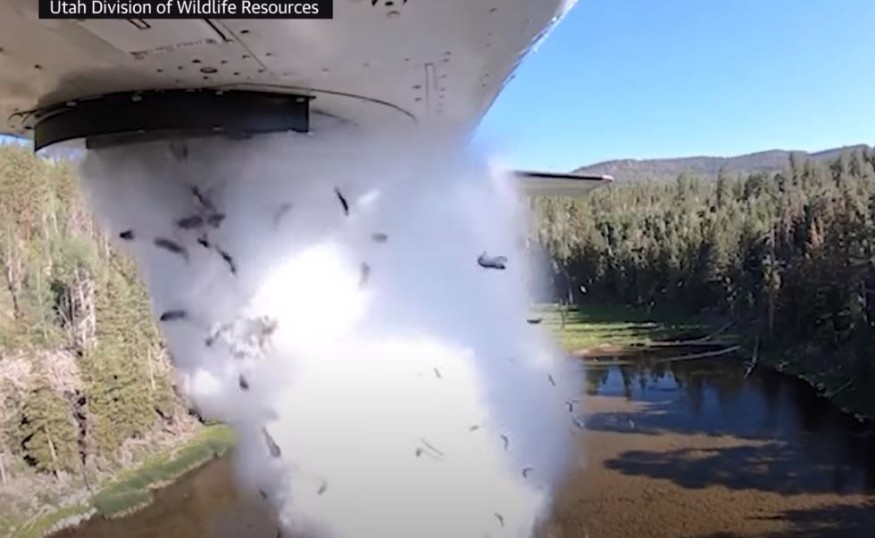Thousands of fishes were dumped from a plane into lakes across the state of Utah just last week. Wildlife officials say the goal was to restock the states' lakes with fishes, which is only possible if done aerially.
While some people who had watched the viral video of the fishes 'tumbling down' the planes in Utah described the restocking as a 'bombardment', officials assure that the fishes' survival was 'incredibly high'.
According to Utah Division of Wildlife Resources (DWR), 200 high-elevation lakes across the state were restocked with fishes by use of airplanes, and that they had proven this as an efficient method since 1956
.

"For these fish, the fastest way to the water is down"
Restocking remote mountain lakes by dropping fish from planes which may look like a violent, fatal end for them is actually the fastest and most logical method when it comes to restocking for small fishes.
"Fun fact: We stock many of Utah's high-mountain lakes from the air. The fish are tiny - anywhere from 1-3 inches long - which allows more than 95% of them to survive the fall," explained the Utah DWR in a twitter post. Due to the fishes' very small size, "they fall to the water like leaves," said Phil Tuttle, the outreach manager for the southern region office of the Utah DWR.
These tiny, shiny animals that burst its way down the lakes are the most common species of hybrid trout known as splake (Salvelinus fontinalis) and Arctic grayling (Thymallus arcticus).
The pilot which carries hundreds of pounds of water drops up to 35,000 fish in a single flight, dropping them just above tree line or as low as they possibly can, while also looking for possible barriers like cliffs or mountains.
Every year, more than 200 of Utah's remote mountain lakes are stocked using the aerial fish-drop method. Before this, Utah wildlife took a more stressful journey in restocking lakes by carrying the fish up to the remote mountain on foot, with horses if they got lucky.
Fishless Lakes
These remote, high-elevated lakes are basically inaccessible, often too far from roads and require much longer time to reach by land than aerial transports. Through years of netting surveys which includes collecting fish in a net and counting them, plus decades of successful recreational fishing, Utah's Wildlife experts can confirm that the fishes 'do all right after their aerial plunge'. Staff members of the organization did enough netting surveys within minutes of the recent 'fish drop' to verify initial survival rates, as well.
Without the effort and initiative of restocking high-elevation lakes each year, fish population in common fishing spots would eventually decline and most of these lakes would be 'fishless'.
The DWR generally stocks the lakes with sterile fishes raised in hatcheries, also as a measure of population control in case it booms. This ensures minimal impact on native wildlife species and promoting balance in the ecology.
© 2025 NatureWorldNews.com All rights reserved. Do not reproduce without permission.





